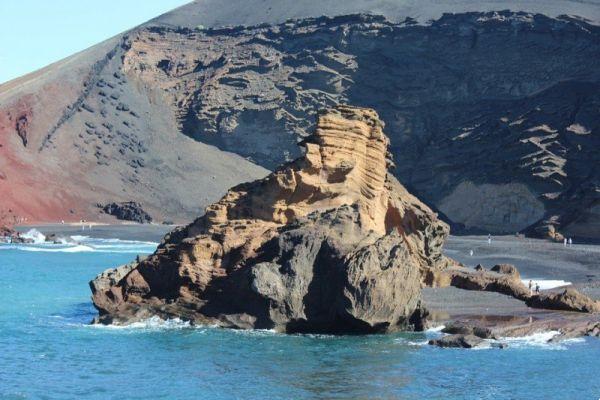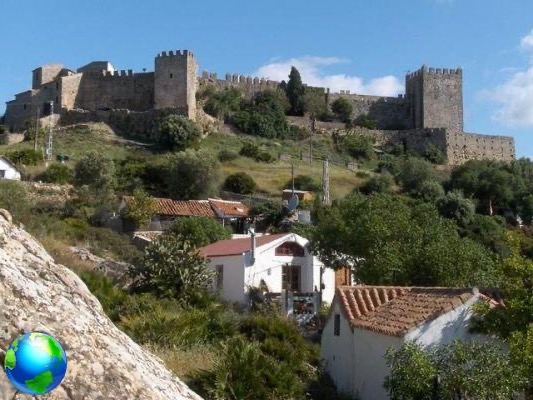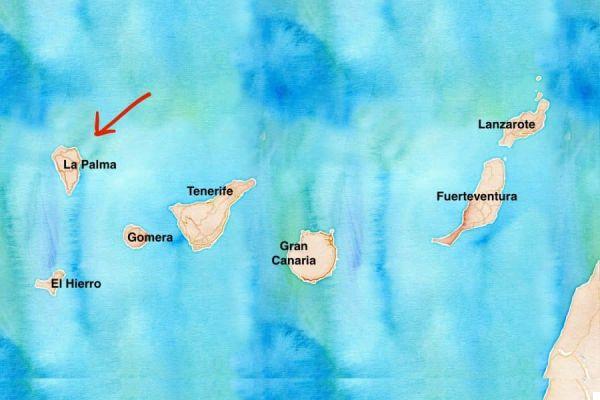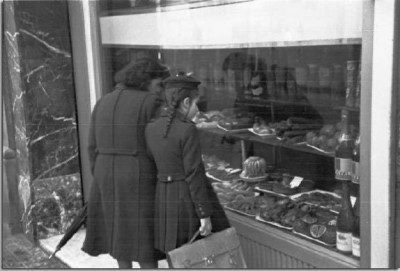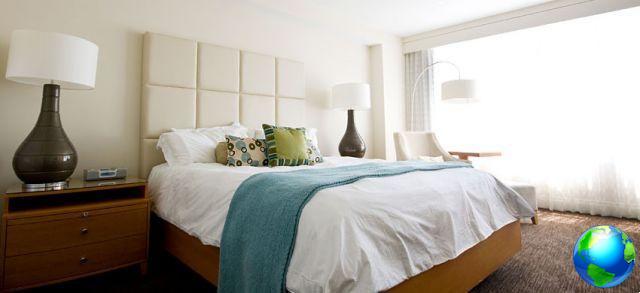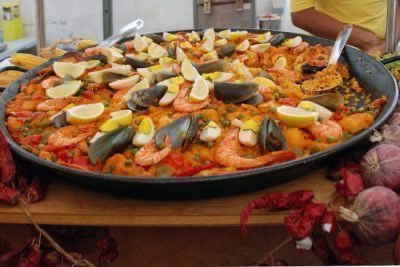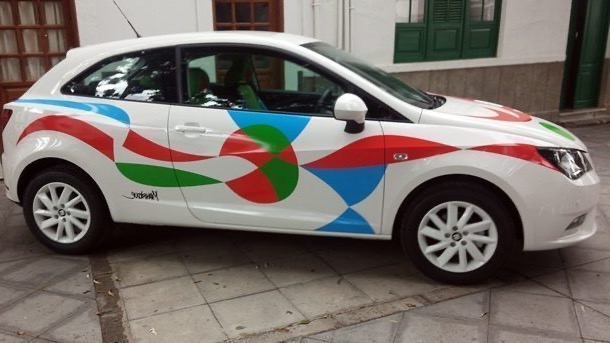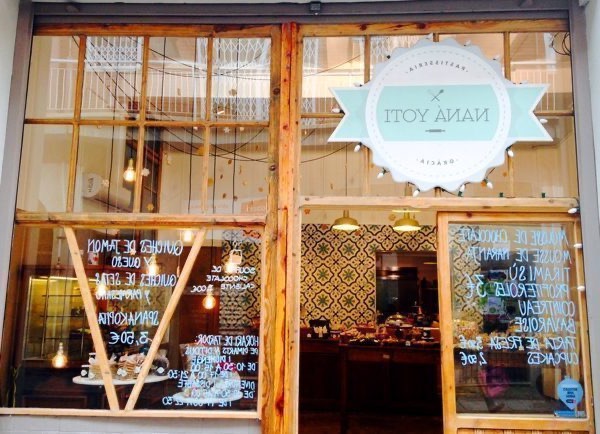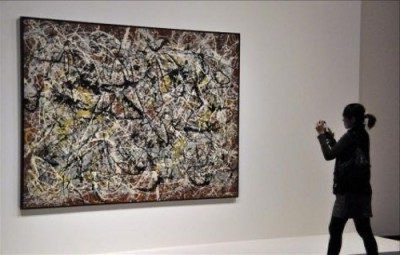Seville is the largest city in southern Spain as well as the capital of Andalucia, and requires at least 2 or 3 days of visit to be able to fully appreciate it. AND the homeland of Carmen, Don Giovanni and Figaro, as well as del flamenco and race, and perfectly embodies the spirit and traditions of Andalucia. Among the most important traditions there are certainly the eastern, the week of Easter celebrations in which dozens of brotherhoods carry images relating to the Passion of Christ in processions, and the April Fair, which also opens the bullfighting season. Seeing Seville during these celebrations certainly adds a lot to the travel experience, but it lightens your wallet a lot. It is the most expensive time of the year and finding a place to sleep can be quite a challenge. However, the city is home to many of the region's finest monuments (the Giralda, the Cathedral, the Alcazar, etc.) and the days in Seville will always seem too few, regardless of the period in which you decide to visit it.
If you do not have many days available, my advice is to participate, as soon as you arrive, to a free tour of the city (lasts 2h30 ′) which will allow you to orient yourself. You will begin to travel through the history of the city discovering the legacies of imperial Spain, the medina of Muslim Seville and the dusty streets on which the Roman legionaries marched .. I recommend it (it's free too!).
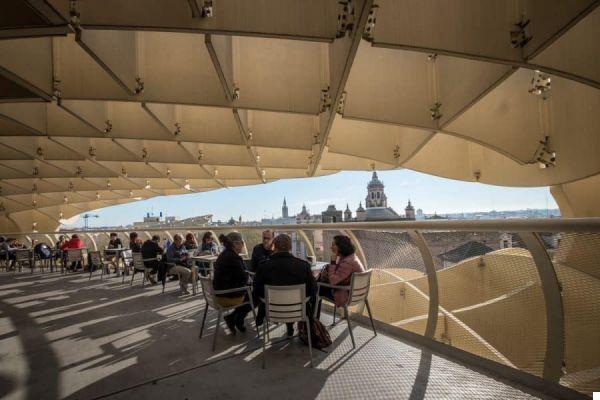
How to get to Seville
- By plane: Seville can be reached from Spain by direct flights from low-cost airlines or via a stopover in Madrid or Barcelona. The airport is located 12 km outside the city center.
- By train: after the plane, it is definitely the best way. From Malaga Seville can be reached by train in 2h and 30, from Pomegranate in 3h and from Cordoba in 1h and 20. The railway station is located 5 km outside the center.
- By bus: even the bus is comfortable, especially if you do not have particular time problems. There are 2 bus stations, that of Plaza de Armas and that of Prado de San Sebastien, where the buses of the companies that manage most of the Andalusian routes depart and arrive: Alsa and Damas-sa.
- How to get around: most of the city attractions can be visited on foot (much of the historic center is pedestrianized) but you must be good walkers. Alternatively you can rent bicycles (Seville has 120 km of cycle paths!) By registering first on the Bike Sharing SEVIci website.
Where to sleep in Seville
Patio de la Cartuja (Barrio Macarena): this property is located in the Barrio Macarena and has both apartments (of various sizes and very nice, quiet and super-equipped) and hotel rooms. The property is located slightly away from the center (which can be reached with a 20 'walk) but in a very nice and local area, around then it is full of bars and restaurants. There is a small paid parking lot just below the building.

What to see in Seville
Seville Cathedral and the mausoleum of Christopher Columbus
The first thing to see in Seville is undoubtedly there cathedral, the symbolic building of the city, the largest church in the world built on the foundations of an old mosque. It is a unique monumental complex where Moorish, Gothic and Renaissance elements are harmoniously combined. You enter from Patio de los Naranjos (Patio degli aranci, the courtyard for the ablutions of the old mosque) and then proceed inside towards the magnificent choir, the Cappella Maggiore, Mausoleum of Christopher Columbus, that of his son Hernando, la Main Sacristy and Royal chapel with the tombs of Ferdinand III and his wife Beatrice of Swabia. In my opinion, the best way to visit it is to take a guide because there is so much information and, despite having a paper guide, you risk losing a lot (entering with the guide you will also skip the queue at the entrance!). Here you can book a private tour of 1h and 30 'in Spanish (14 euros per person). There are also gods Spanish tours combining Cathedral + Giralda + Alcazar.


The Giralda
In memory of the ancient mosque on which the Cathedral was built, the famous remains Giralda, probably the most beautiful monument in Seville. This magnificent square tower built in the Mudejar style was the minaret of the mosque, to which Renaissance elements (balconies, niches, etc.) were later added. From inside the cathedral it is possible to climb up to the bell cell to have a 360 ° view of the city.

The Alcazar
Among the things to see in Seville there is of course theAlcazar. Within this Moorish fortress-palace, decorated with incredible stuccoes and mosaics, much of the history of the city (and of Spain as a whole) has passed. The fortress was built in the 1248th century, but reached the pinnacle of refinement under the Abbasid court in the 4th century. In the twelfth and thirteenth centuries the Almohads transformed the complex into a real citadel, forming the heart of the city's fortifications, but the structure we visit today mainly dates back to the Christian period, after 2. The kings of Spain lived in the Alcazar for almost 3 centuries and General Franco himself stayed there during his official visits. The complex is really big and the visit takes at least XNUMX-XNUMX hours. Don't miss the High Royal Palace (the royal apartments) with the splendid Sala de Audiencias, the Palace of Peter I with the Patio de la Munecas and above all i beautiful gardens. You can book tickets using this link to avoid the risk of having to queue for kilometers (but this is not always possible), or buy it conveniently online before leaving from the (highly reliable) Get Your Guide website (see below).

The Barrio Santa Cruz: the former Jewish quarter
North of the Alcazar is the Santa Cruz neighborhood, the Jewish quarter of Seville until 1492. It is the most romantic and characteristic district of the city, with whitewashed houses, large decorative flower boxes and narrow, winding streets to keep away the stifling heat of summer days. Here is the shop of the Barber of Seville, Murillo House (the home of the famous painter, the Hospital of the Venerable Priests and a former hospice for priests with a magnificent patio (today it houses a beautiful art gallery). Behind the Barrio Santa Cruz is also not to be missed Pilate's House, the most beautiful palace in Seville. Built by the Ribera family in 1519, according to a mistaken belief it is an imitation of the house of Pontius Pilate. It is actually a harmonious blend of Mudejar, Gothic and Renaissance styles with beautiful sculptures, elegant patios and gorgeous azulejos.


Spain Square and Maria Luisa Park
Plaza of Spain is the most photographed square in Seville and was built as part of theIbero-American Exposition of 1929. It is an immense semicircular structure that includes in the complex of towers, fountains, canals, monumental stairways and lots of decorative tiles and is one of the things to see in Seville. It is also a popular spot for sevillanos who come here to relax on the rental boats that cross the canals and to take refuge from the sun in the nearby Maria Luisa Park.
Maestranza Bullring
La Siviglia Bullring it is considered the most beautiful in Spain (together with that of Ronda) and it is also the most famous for lovers of bullfighting. It was built in the 20th century to house the royal cavalry (Real Maestranza de Caballeria), appears in many novels and in many films (including Carmen). It can only be visited by participating in a guided tour that lasts about 4 '(price XNUMX euros).

The Mushrooms (Metropol Parasol)
Mushrooms (aka mushrooms) is the name that the sevillanos gave to this large wooden structure, which houses a shopping center, a market, several restaurants, a museum and the Roman ruins of Hispalis. The strong point of the structure is the suspended walkway which offers a beautiful panoramic view of the old city. It is open from 9:30 to 22:30 and admission costs € 3 (includes a free drink in the bar below).
Barrio Macarena and the Triana district
Among the things to see in Seville, Il Macarena neighborhood. Once the poorest neighborhood in the city, this neighborhood managed to save itself from housing speculation while remaining one of the few still authentic neighborhoods in Seville. Today it is a very characteristic neighborhood, with small cobbled streets, churches and convents, which has taken on a new luster since the autonomous Parliament of Andalucia was moved here. It also houses the Basilica of the Macarena, with the cult statue of the city, the Virgin of Hope Macarena, considered the patron saint of bullfighters (all matadors ask her a prayer before performing). Stop for a tapas in the oldest bar in Seville, El Rinconcillo, which has existed since 1670. Another authentic neighborhood not to be missed is the Triana neighborhood, located on the opposite side of the Guadalquivir.


Other places to see in Seville
Other places to visit in the city are definitely there tower of Gold, along the Guadalquivir, built in 1220 by the Almohads as part of the Alcazar fortifications, the El Centro neighborhood, which includes the main shopping street: Siepes Street. If you find yourself on the latter, go to number N.1 to see the most famous pasteleria in Seville: The bell. Finally the Baile Flamenco Museum, an innovative museum dedicated to Andalucia's most famous dance.







